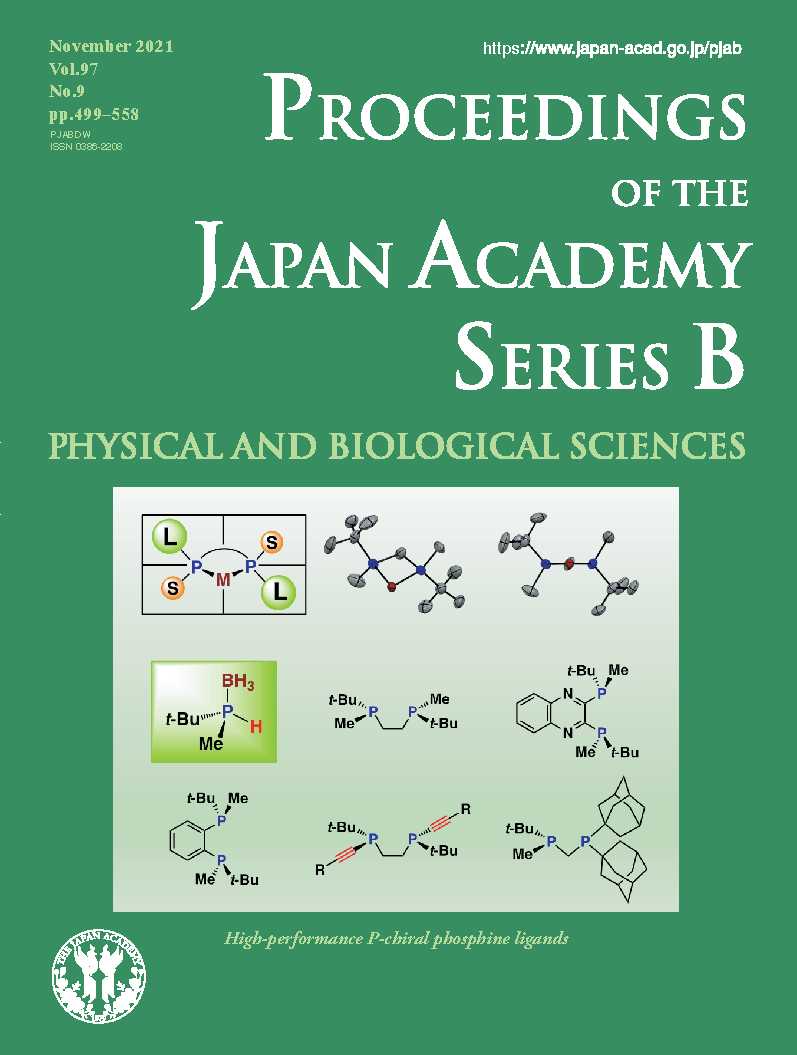
- |<
- <
- 1
- >
- >|
-
Kazuya ANDO2021 Volume 97 Issue 9 Pages 499-519
Published: November 11, 2021
Released on J-STAGE: November 11, 2021
JOURNAL FREE ACCESS FULL-TEXT HTMLAn emerging field of spintronics, spin-orbitronics, aims to discover novel phenomena and functionalities originating from spin-orbit coupling in solid-state devices. The development of spin-orbitronics promises a fundamental understanding of spin physics in condensed matter, as well as smaller, faster, and far-more energy-efficient spin-based devices. Of particular importance in this field is current-induced spin-orbit torques, which trigger magnetic dynamics by the transfer of angular momentum from an atomic lattice to local magnetization through the spin-orbit coupling. The spin-orbit torque has attracted extensive attention for its fascinating relativistic and quantum mechanical nature, as well as prospective nanoelectronic applications. In this article, we review our studies on the generation and manipulation of current-induced spin-orbit torques.
View full abstractDownload PDF (2692K) Full view HTML -
Tsuneo IMAMOTO2021 Volume 97 Issue 9 Pages 520-542
Published: November 11, 2021
Released on J-STAGE: November 11, 2021
JOURNAL FREE ACCESS FULL-TEXT HTMLMetal-catalyzed asymmetric synthesis is one of the most important methods for the economical and environmentally benign production of useful optically active compounds. The success of the asymmetric transformations is significantly dependent on the structure and electronic properties of the chiral ligands coordinating to the center metals, and hence the development of highly efficient ligands, especially chiral phosphine ligands, has long been an important research subject in this field. This review article describes the synthesis and applications of P-chiral phosphine ligands possessing chiral centers at the phosphorus atoms. Rationally designed P-chiral phosphine ligands are synthesized by the use of phosphine–boranes as the intermediates. Conformationally rigid and electron-rich P-chiral phosphine ligands exhibit excellent enantioselectivity and high catalytic activity in various transition-metal-catalyzed asymmetric reactions. Recent mechanistic studies of rhodium-catalyzed asymmetric hydrogenation are also described.
View full abstractDownload PDF (3065K) Full view HTML
-
Hirotaka SUGAWARA2021 Volume 97 Issue 9 Pages 543-558
Published: November 11, 2021
Released on J-STAGE: November 11, 2021
JOURNAL FREE ACCESS FULL-TEXT HTMLWe continue (Ref. 1: Proc. Jpn. Acad. Ser. B 97, 22–49) to analyze the COVID-19 status. We concentrate on the following issues in this work:
1. Effect of vaccination against the spreading of SARS-CoV-2.
2. General landscape of the world situation concerning vaccinations.
3. Some aspects of the new variants of SARS-CoV-2.
Our findings include:
1. With vaccinations, it is fair to say that we have entered a new phase in the fight against the virus SARS-CoV-2. We have analyzed some preliminary data to find how vaccinations can be effective against COVID-19 spreading. This analysis is based on, and is a continuation of, our first paper quoted in Ref. 1.
2. If Tokyo (or Japan) continues to keep its vaccination schedule (starting in early April, 2021 and finishing it for elderly, 65 or older, in 4 months), it will see a sign of control of the virus in early June, 2021 although we see changes of this status due to new, more contagious variants.
3. The strength (parameter β) of a new contagious variant can be estimated based on the initial data on the variant (Section 5).
View full abstractDownload PDF (1244K) Full view HTML
- |<
- <
- 1
- >
- >|